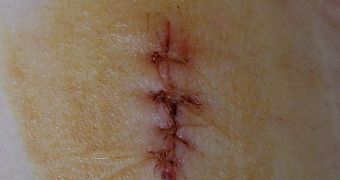Experts manage to develop a new type of gel that could in the near future be used to reduce, or even stop blood flow to a wound entirely.
Stopping blood flow to an injury site is extremely important in emergency situations, and whether or not this happens could mean the difference between life and death.
For years, emergency healthcare personnel, on battlefields and elsewhere, have been looking for a way to replace having to put stitches in a wound.
It's not that this is not efficient in getting the job done, experts say, but that the treatment requires a lot of time to apply, as well as a safe and secure location.
These conditions are not always met on the battlefield, for example, where managing to stop the bleeding until medical evacuation team arrives is of paramount importance.
This may now be possible, researchers say, thanks to a Jell-O like chemical. The gel is capable of preventing excessive blood loss, without emergency personnel needing to stitch a wound up.
The blood-clotting hydrogel is made up of water and a special type of fibrous polymer, and its creators say that it would cost less than $10 per application. This is considerably lower than the price tags of other medical gels currently in use.
Details of the new product were made available on August 23 in Boston, at the fall meeting of the American Chemical Society (ACS), Science News reports.
The key of the new innovation is the polymer acrylamide, whose actions have been augmented by the addition of positively-charged, nitrogen-containing groups.
“You can just slap it on a wound,” explains University of Maryland in College Park biomedical engineer Brendan Casey. He was one of the experts involved in developing the new gel.
The gel itself acts directly on a blood-clotting protein, promoting its activation. Factor VII than goes on to trigger other cascades of processes, that ultimately lead to rapid blood clotting at the injury site. s
In the experiments the group conducted on sheep, it was revealed that the gel acts fast. It took about two minutes for the substance to stop bleeding from the lungs, while preventing liver hemorrhage took four to five minutes.
The new gel therefore works well as a topical treatment, experts say. However, it cannot be absorbed into the human body, and then broken down.

 14 DAY TRIAL //
14 DAY TRIAL //